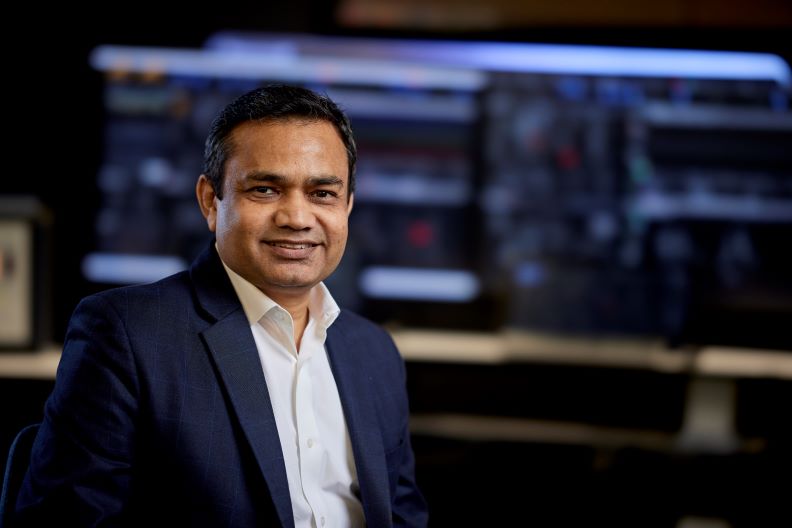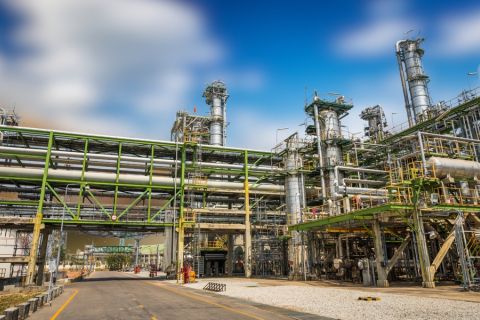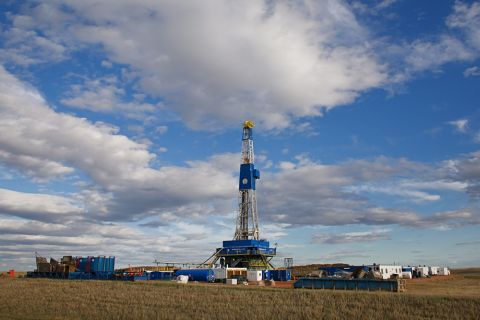
AI-driven software can help drive efficiency in operations. (Source: Honeywell)
As artificial intelligence (AI) takes shape, energy companies are buying into the new wave now and into 2024.
But they are not just implementing AI for the sake of a shiny new toy.
Companies are finding that AI and generative AI (gen AI), when strategically planned, minimizes downtime and speeds up the innovation process, among other benefits.
Pramesh Maheshwari, president of Honeywell Process Solutions, said interest in AI solutions has evolved, with customers’ questions becoming attentive compared to what was previously apprehensive.
“Customers are saying, ‘How can I increase my safety using AI and analytics? How can I increase my productivity?’” he said.
They are also interested in AI-enabled decision making, AI-enabled operations, AI-enabled maintenance and AI-enabled engineering, he said.
“AI is a means to achieve outcomes,” Maheshwari said. “‘What are those outcomes? Can I run my plant safely, and can someone tell that if I’m using more analytics, my plant will get safer? How much productivity can I get?’”
Now that AI is more mainstream, companies are implementing the tech into their operations. In November, BP announced plans to roll out Copilot, billed as an intelligent AI assistant for Microsoft 365, across a substantial part of its workforce in early 2024.
And Maheshwari expects wider adoption of digital twins—simulations of real-life objects—throughout 2024.
“You’ll see more and more data going to digital twins,” and those digital twins will be used for “more productive analytics,” he said.

Deloitte’s “2024 Oil and Gas Industry Outlook” indicates the industry, which has now accepted the transformative force of AI, is poised at the threshold of the gen AI frontier. The industry’s early willingness to work with innovative computing and sensing technologies has already made oil and gas production more efficient as a result, Kate Hardin, executive director at Deloitte Research Center for Energy and Industrials, told Hart Energy.
“Oil and gas took their first step in visualization and sensing and monitoring and downhole sensors some time ago. I think in a way oil and gas was a little bit at the forefront of some of this even a decade ago,” Hardin said. “They’re building on already a history of some innovation and digital innovation in particular.”
Gen AI: new driver of innovation
Amy Chronis, U.S. energy and chemicals leader at Deloitte, said AI and gen AI can help the industry reduce operational costs, improve process efficiencies, optimize revenue generation and accelerate prototyping and innovation.
Deloitte clients who experimented with AI and gen AI in areas spanning from initial resource exploration to refining have benefited from reduced costs, higher productivity and operational reliability, she said.
“Generative AI really can go beyond traditional AI and create value,” Chronis said.
According to Deloitte’s report, an offshore platform that produces 200,000 bbl/d experiencing about 12 hours of unplanned downtime faces deferred production worth up to $8 million, but using gen AI-driven solutions to create comprehensive maintenance plans, task lists and real-time recommendations could prevent that unplanned downtime while minimizing equipment failures.
Gen AI can also provide analysis insights and modeling support in a shorter time frame to improve decision making, Chronis said.

Gen AI is also likely to help with innovations needed in the energy transition, she said.
“Helping us expedite solution development and by enabling rapid testing of new ideas and concepts, that idea of rapid testing and proofing of concepts, we think, is really important,” she said. “It’s not a panacea by any means. There’s still a lot of work to be done around taking into account bias and synthetic data.”
In short, innovation will move more quickly.
“These models are going to help people move a lot faster, go through massive amounts of more data and give results faster than we humans can use, to do things faster and better,” Chronis said.
Hardin expects gen AI to contribute to other efficiencies.
“If you think about predictive maintenance, for example in the oil and gas industry, not only are you identifying the issue, but maybe you’re also developing the paperwork or you’re able to take the next step in terms of how you solve the issue,” she said.

Marching toward autonomy
According to Maheshwari, AI-supported digital transformation programs can underpin the journey from automation to autonomous, allowing for what he calls optimal sustainability performance.
“Autonomous doesn’t mean that 100% of people will move away from the plants, but people should move away from the hazardous location,” he said. “People should move away from low-value repetitive tasks.”
The goal is to move people from “reactive to proactive monitoring and maintenance through digital services, real-time decision support from the boardroom to the plant floor” using AI-enabled tools, he said.
Virtual training

As people enter the industry—or switch jobs—augmented reality (AR) and virtual reality (VR) are increasingly helping with experiential training, replacing the long weeks and months of new-hires shadowing seasoned employees, Maheshwari said.
There are huge use cases for AR, VR and AI-enabled training, he said.
Simulation training and refreshers can drill employees on handling crisis scenarios, such as extinguishing a fire or if the system detects an equipment malfunction.
“Now they are fully up to date on what they need to go and do on that equipment,” he said.
Remote staff are able to help, reducing the need for someone to travel to the location and decreasing the amount of downtime, he added.
“People ask me the question … ‘will you be reducing people or will you be removing people?’” he said, to which he answers, “Okay, people will be removed from the hazardous location, from the unsafe location, but then this will make all the people an expert. Then experts need not to keep flying to plants. You need not to keep waiting for some expert to come out.”
This type of use case is only expected to increase in popularity because it minimizes exposure to hazards, decreases the need to travel and reduces the downtime.
Next-gen friendly
Embracing cutting-edge tech like AI and VR could help the industry attract and retain younger people, Maheshwari said.
When using new technology like augmented reality, VR, models and digital twins—to name a few—young graduates are encouraged to take jobs in the industry, he said, and retention is up compared to graduates who take a job and find work is carried out in an analog fashion rather than being recorded digitally.
And, Hardin said, academic studies have shown gen AI can level the playing field for new-hires, even if they haven’t been able to fully absorb the training manual.
“There’s also the issue of not just gen AI, but other skill sets. How do you walk in and begin to use new digital technologies, begin to use AI in terms of analyzing all of that information and really beginning to use gen AI in particular, to not even replace people, but augment the folks that you get so they can get up to speed faster,” she said. “You’re taking a little bit of the training burden off when you’re using gen AI for some of those training areas.”
Recommended Reading
Talos Energy Sells CCS Business to TotalEnergies
2024-03-18 - TotalEnergies’ acquisition targets Talos Energy’s Bayou Bend project, and the French company plans to sell off the remainder of Talos’ carbon capture and sequestration portfolio in Texas and Louisiana.
M&A Spotlight Shifts from Permian to Bakken, Marcellus
2024-04-29 - Potential deals-in-waiting include the Bakken’s Grayson Mill Energy, EQT's remaining non-operated Marcellus portfolio and some Shell and BP assets in the Haynesville, Rystad said.
TotalEnergies Buys Majority Stake in Ecoslops Provence JV
2024-03-01 - TotalEnergies bought out its joint venture partner to become the sole shareholder in cleantech venture Ecoslops Provence.
TotalEnergies, Vanguard Renewables Form RNG JV in US
2024-04-24 - Total Energies and Vanguard Renewable’s equally owned joint venture initially aims to advance 10 RNG projects into construction during the next 12 months.
TotalEnergies, Sinopec to Develop SAF Unit in China
2024-03-26 - TotalEnergies and Sinopec’s production unit will have the capacity to produce 230,000 tons of sustainable aviation fuel per year.






